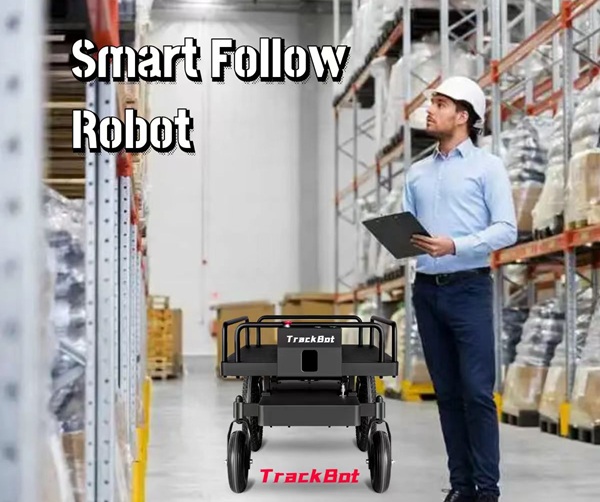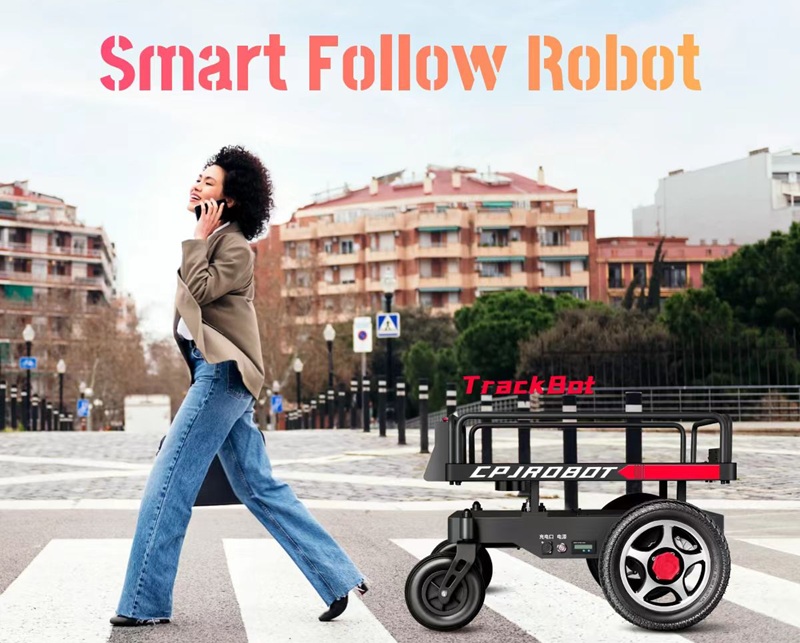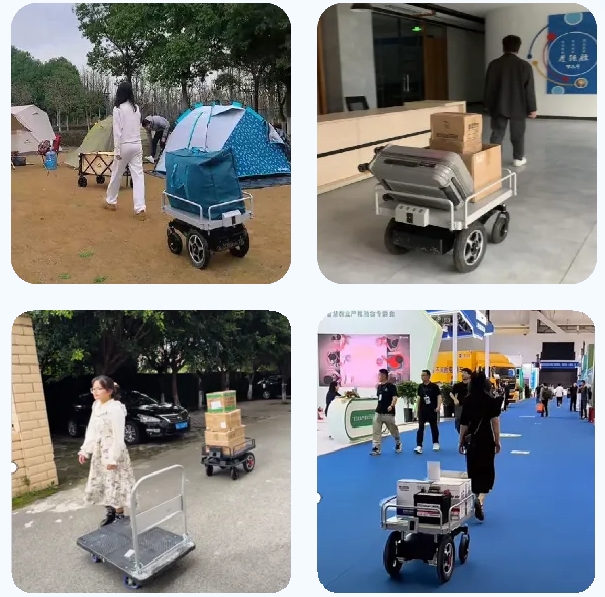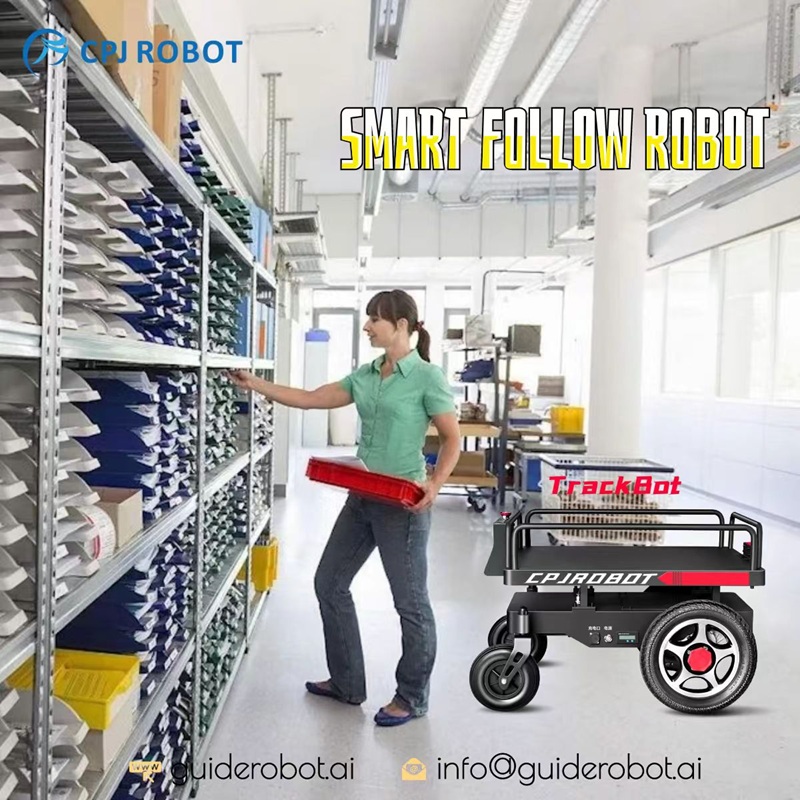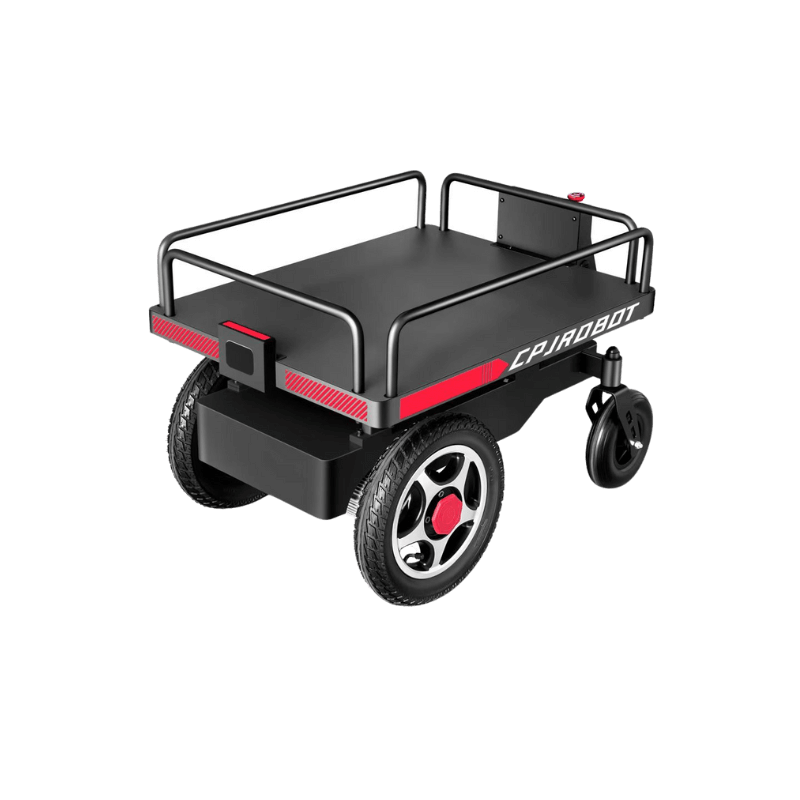The Magic Behind Following Robots
Have you ever watched a robot smoothly follow its owner through a crowded space, deftly avoiding obstacles while maintaining perfect distance? This isn’t science fiction – it’s today’s reality powered by advanced robotics technology. At CPJROBOT, we’ve been at the forefront of developing these intelligent machines, and we’re excited to pull back the curtain on how they actually work.
Smart following robots combine cutting-edge sensors with sophisticated AI to create remarkably natural following behavior. Whether it’s a luggage carrier in airports, a warehouse assistant, or a personal companion robot, the core technology remains similar. Let’s dive into the three key technological pillars that make autonomous following possible.
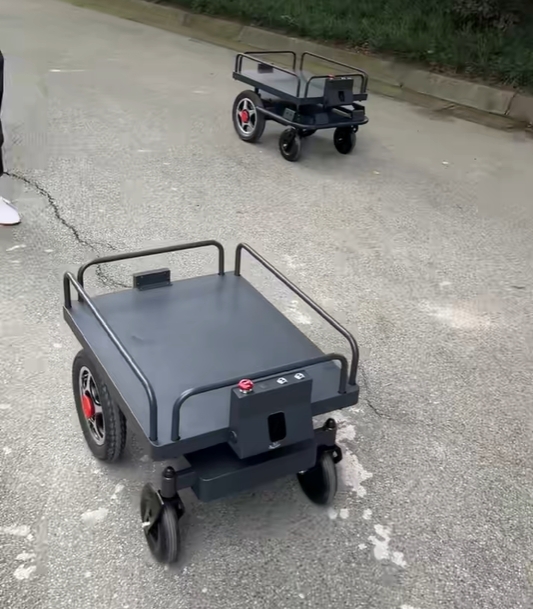
1. Sensor Fusion: The Robot’s “Senses”
Multi-Sensor Approach for Comprehensive Awareness
Unlike humans who rely primarily on vision, following robots use multiple sensor types to understand their environment:
- LiDAR (Light Detection and Ranging): Our LRS-4000 series LiDAR provides 360° scanning with millimeter precision up to 40 meters, creating real-time 3D maps of the environment
- RGB-D Cameras: Combine color imaging with depth perception to identify and classify objects
- Ultrasonic Sensors: Particularly effective for close-range obstacle detection (10cm-2m)
- Inertial Measurement Units (IMUs): Track the robot’s own movement and orientation
Real-world example: In airport testing, our sensor fusion system correctly identified and avoided 99.3% of obstacles including glass walls (which challenge many other systems) while maintaining target tracking.
2. AI Algorithms: The Robot’s “Brain”
From Raw Data to Intelligent Decisions
The true magic happens in how robots process all this sensor data:
Deep Learning Models
- Convolutional Neural Networks (CNNs) process visual data to identify the target person/object
- Recurrent Neural Networks help predict movement patterns
- Our proprietary models achieve 98.5% tracking accuracy in crowded environments
Artificial Potential Field Algorithm
- Creates “virtual force fields” around obstacles
- Allows smooth, human-like path adjustments
- Enables following at speeds up to 2m/s with rapid stopping
Case Study: A major logistics company implemented our robots and saw a 40% reduction in collision incidents compared to their previous ultrasonic-based system.
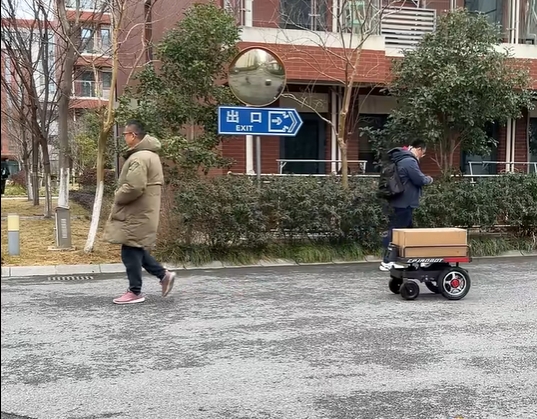
3. Real-Time Positioning: The Robot’s “Sense of Space”
Precise Relative Positioning Technology
Knowing where the target is relative to the robot is crucial:
- Mobile Plane Positioning: Uses a combination of visual markers and wireless signals to maintain positioning
- Adaptive Kalman Filtering: Compensates for sensor errors in real-time
- 5° Angular Precision: Critical for maintaining proper following orientation
Our testing shows the system can maintain tracking at distances up to 200 meters in open spaces, with automatic reacquisition if the target is temporarily obscured.
Conclusion:The Future of Following Technology
The combination of advanced sensor fusion, sophisticated AI, and precise positioning creates following robots that feel almost intuitive in their movements. At CPJROBOT, we’re continuing to push these technologies further – our next-generation systems will feature:
- Improved power efficiency for longer operation
- Enhanced social signaling to make robot movements more predictable to humans
- Swarm intelligence for multi-robot coordination
Ready to Implement Following Robots in Your Operation?
🚀 CPJROBOT specializes in industrial-grade LiDAR and smart robotics solutions. Whether you need:
- Warehouse logistics assistants
- Healthcare support robots
- Retail inventory companions
We can customize a solution for your specific needs.
